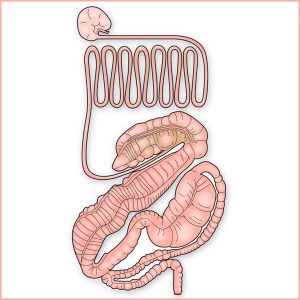
Managing Your Horse’s Bugs
Bugs? What bugs?
Horses are hindgut fermenters. In other words, the hindgut portion of your horse’s digestive tract contains millions of beneficial bacteria and yeast, often referred to as microbes or “bugs.” These bugs have the ability to break down otherwise indigestible fiber into digestible compounds through a process called symbiotic microbial fermentation. Both the horse and the bugs benefit from this process. By joining forces, the bugs and the horse have evolved to utilize the complex carbohydrates found in grass and hay as a source of energy.
Good and bad bugs
Your horse’s cecum and colon, which make up the hindgut, contain both good and bad bugs. Your goal is to maximize the number of good bugs, while limiting the bad ones. Having a large number of good bugs ensures a healthy gut, which can effectively digest fiber, absorb nutrients, and regulate fluids. The good bugs keep the bad bacteria in check so they can’t overwhelm and damage the delicate hindgut. A proliferation of bad bugs can lead to many problems, including colic, diarrhea, and laminitis.
It’s a balancing act
The bug population living in your horse’s gut is complex and easily disrupted. These bugs have evolved to convert a continual supply of moist grass into energy. Wild horses graze up to 17 hours a day, ingesting a variety of plants that slowly change in composition with the seasons.
The demands made on today’s horses often make it hard for us to mimic this natural state in our management programs. Confinement, high-energy demands, abrupt feed changes, shipping, illnesses, and other stressful situations can throw the delicately balanced system out of whack and make your horse sick.
Keeping the good bugs happy and healthy is one of the major challenges facing today’s horse owners.
Eight Easy Steps to Happy Bugs:
- Provide an unlimited source of clean water at all times.
- Feed a consistent diet and make all changes in concentrates, hay and supplements slowly — over a week to 10 days — to allow the bug population enough time to adapt to new compounds.
- Feed high-quality fiber and offer it ad lib whenever possible.
- Feed concentrates as small, frequent meals. Do not feed more than 4 pounds of concentrate per meal.
- Maintain a consistent feeding schedule. Bugs become accustomed to “eating” at certain times of the day, so not feeding your horse on time can cause the beneficial bugs to die off. If too many bugs die off at once, the hindgut will become unbalanced.
- Keep all feeds and supplements in a horse-proof container or feed room to avoid accidental overeating.
- Never feed tainted or moldy concentrates, hay or supplements.
- Supplement your horse with high-quality probiotics during times of stress or after antibiotic use. Probiotics can help repopulate the hindgut with “good” bugs.


